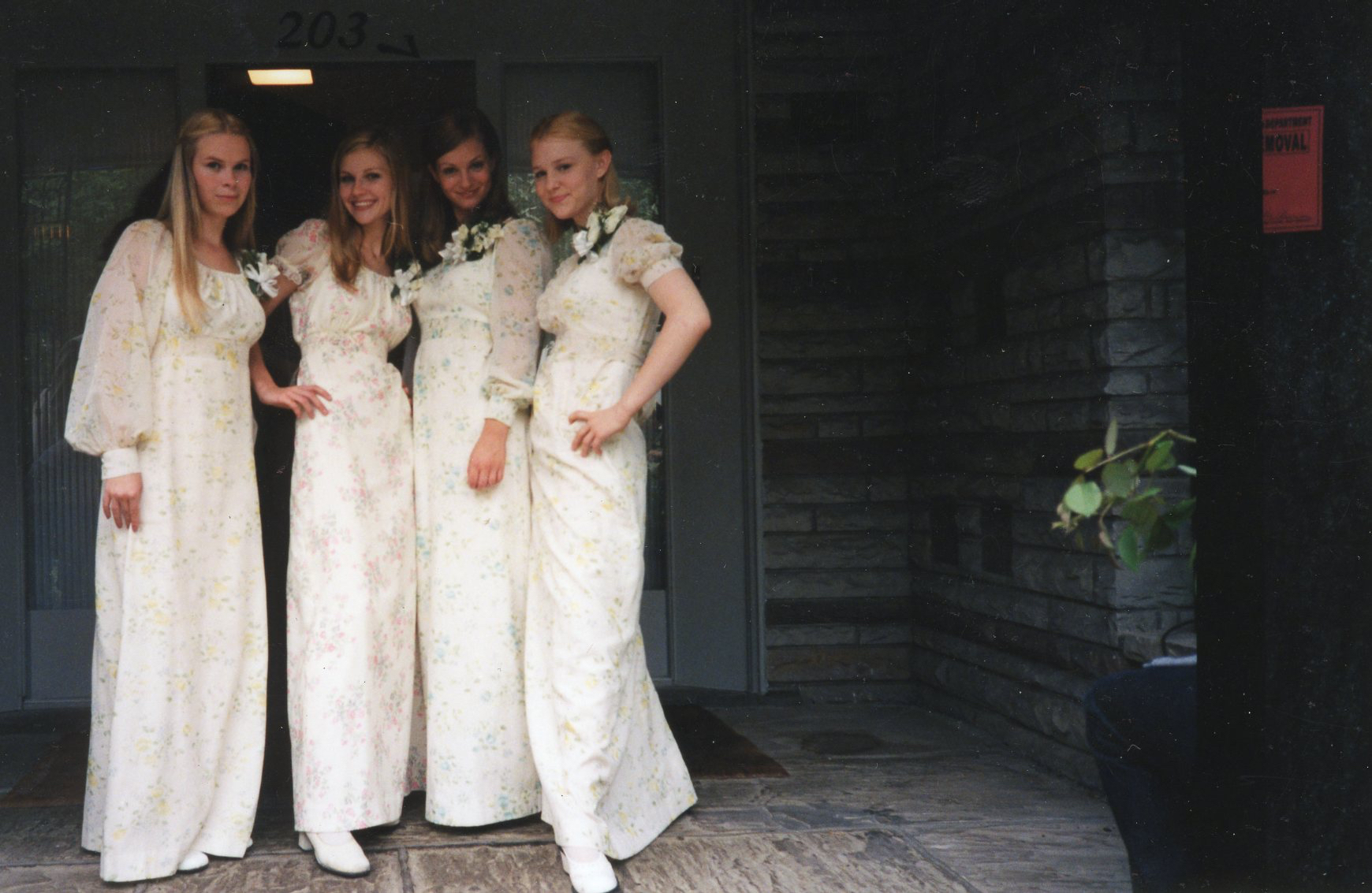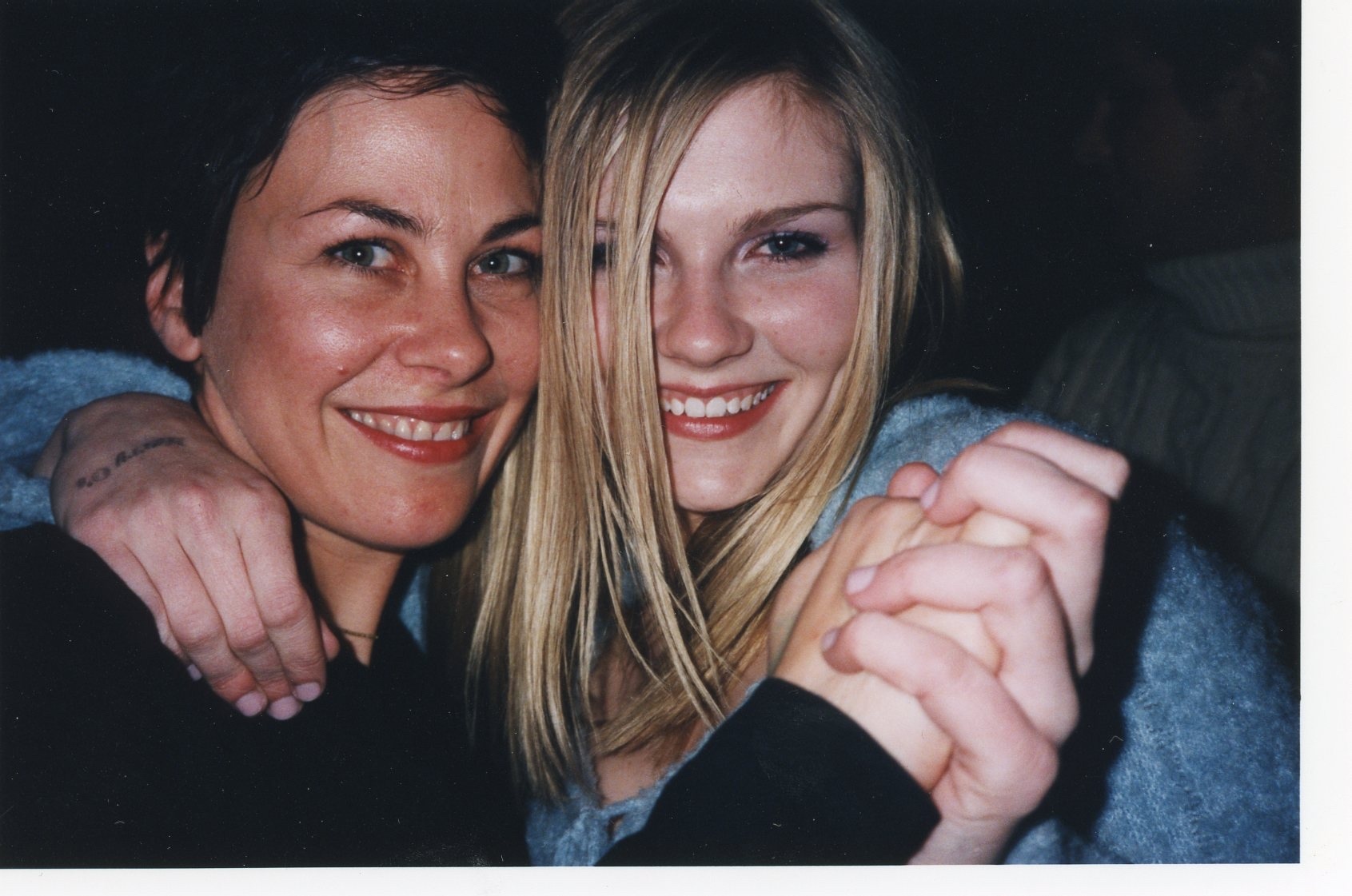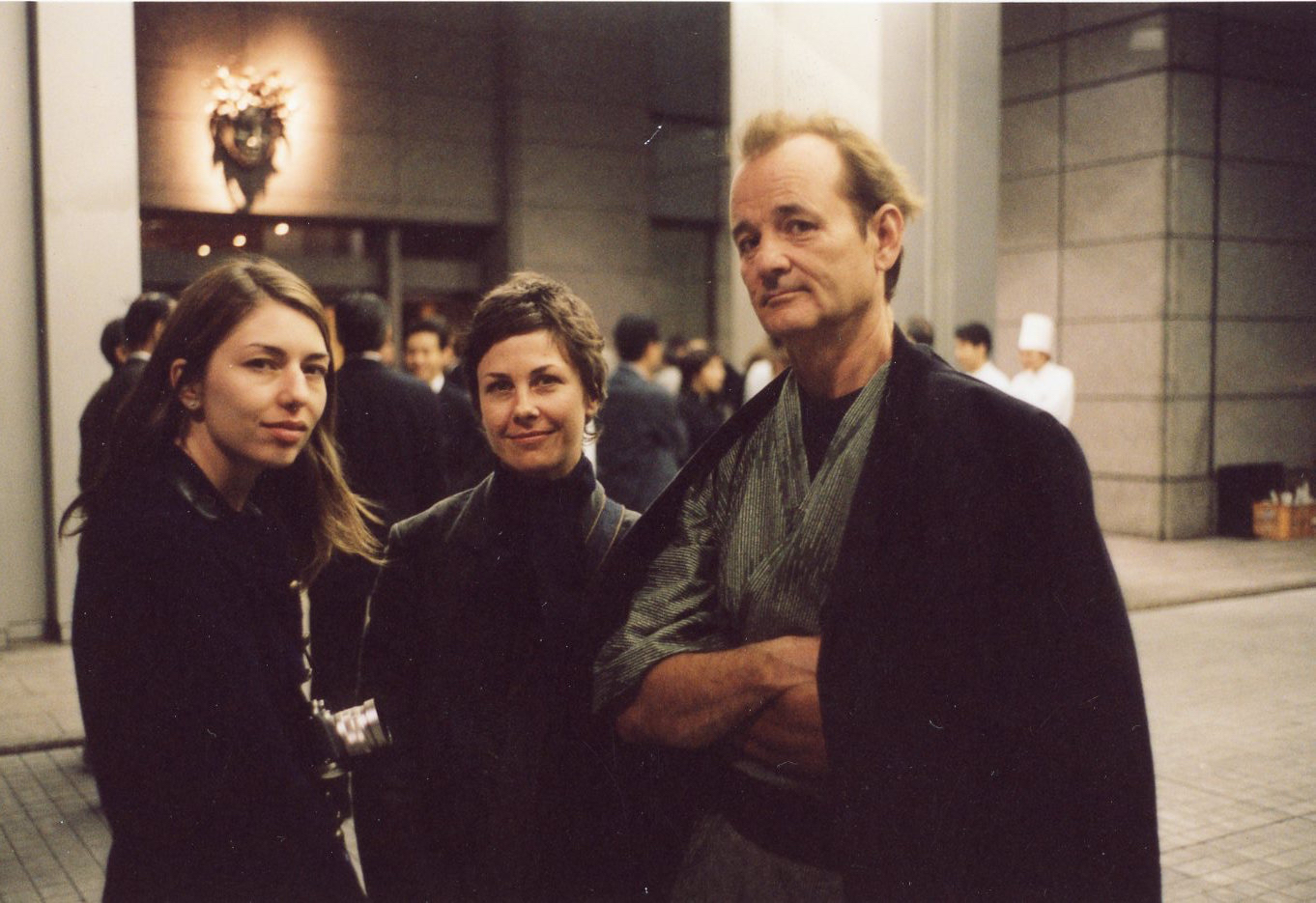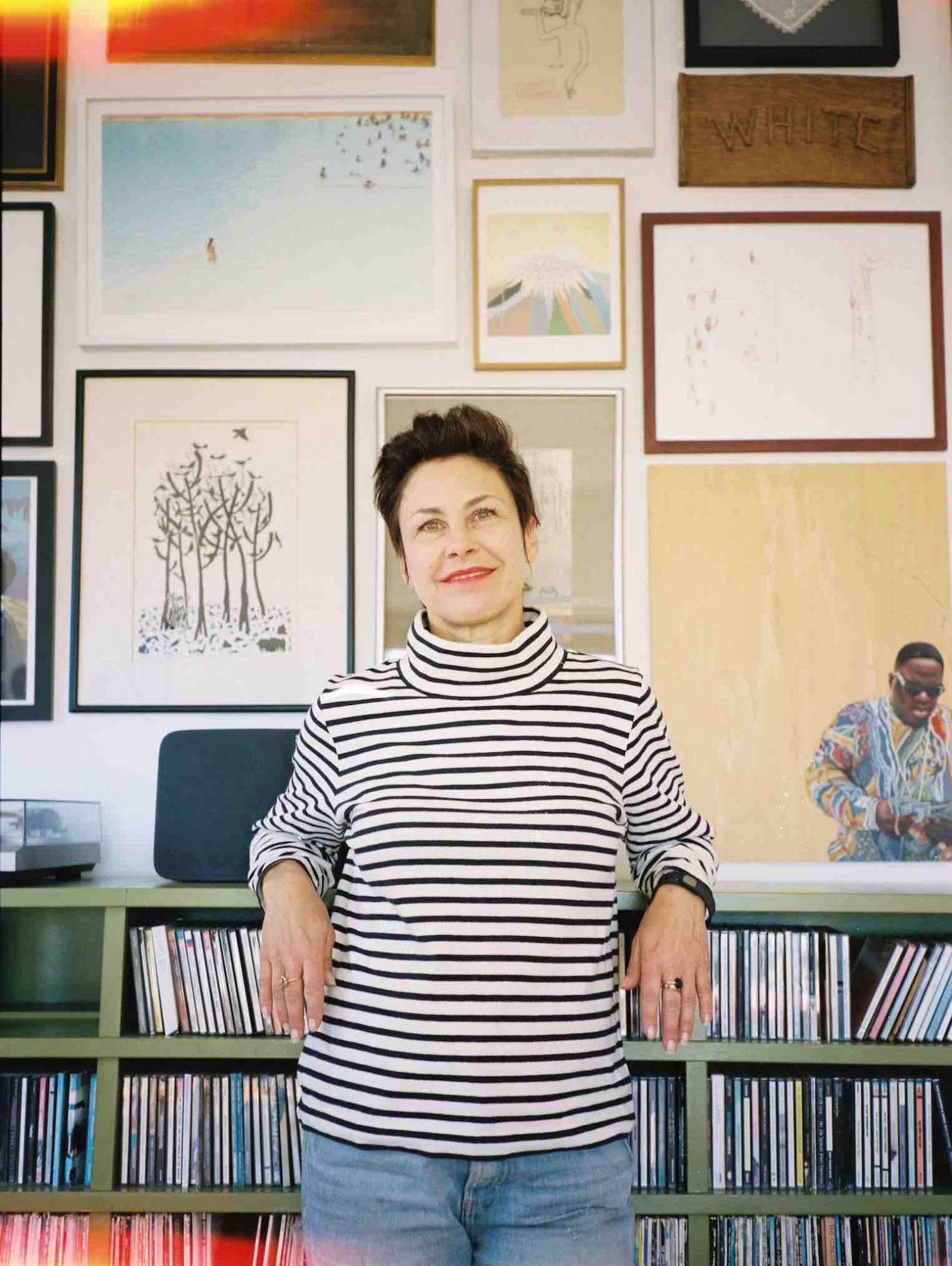Nancy Steiner, with her unassumingly casual uniform of jeans and a t-shirt and the mellow Silver Lake bungalow where she’s lived for 17 years, doesn’t fit the mold of a Hollywood power player. But after 30 years of creating iconic looks for some of the most influential films and music videos ever made, the veteran costume designer and secret weapon to indie directors is stepping out from behind the seams, and it’s about time. Not only has Steiner costumed our teenage idols — from Björk to Bowie, Nirvana to No Doubt, Kirsten Dunst to Claire Danes — she recently added David Lynch’s much buzzed about Twin Peaks revival to her already humbling oeuvre. It’s an ambitious revisiting of the small-town cult favorite a quarter-century later, and one that only a designer as nuanced as Steiner could possibly bring back to life.
But long before collaborating with industry legends in the fictional town of Twin Peaks, Steiner hawked vintage at a punk haven in Santa Monica called NaNa, caught the bus to X, Minutemen, and Siouxsie and the Banshees shows, and studied fashion design at Los Angeles Trade Tech College alongside aspiring washing machine repairmen, electricians, and plumbers (she couldn’t afford to attend Otis). After this stint in retail, Steiner eventually began assisting stylists, including Eugenie Bafaloukos, who entrusted her with shopping for Winona Ryder and Ethan Hawke’s quintessentially 90s characters in Reality Bites.”Winona’s character dressed a lot like I did back then, in old men’s tees and trousers,” Steiner remarks.
Related: The Stories Behind Your Favorite Music Videos, From Nirvana to No Doubt
She got her big break outfitting her old friends the Red Hot Chilli Peppers for their freshmen music videos, many of which she can be spotted in. “We grew up in the scene together,” she states, without a hint of ego. To this day, Flea’s been known to call in the occasional wardrobe favor.
From there, the rest is rock history. Kurt Cobain in that olive green grandpa cardigan for his memorable appearance on MTV Unplugged. Scott Weiland of The Stone Temple Pilots rocking a pink feathery jacket in “Interstate Love Song.” Gwen Stefani’s sweet polka-dot frock in “Don’t Speak,” which may or may not have been plucked from Nancy’s own closet. All just a sliver of her handywork. “We didn’t know it was going to go away. It was a great new medium, and we were just so lucky and excited to be in the thick of it,” recalls Steiner, of the golden age of music videos. “I feel so blessed that I got to cut my teeth on that. As a designer, it was so much more free and collaborative and creative. A lot of the bands I got to work with already had so much style — like, Björk’s so amazing, she doesn’t need any help, and Smashing Pumpkins already had a groove going — and I just got to add to it. It was so fun to work with people whose music I really loved.”

As if it’s not enough to have outfitted the official soundtrack of the 90s, her cinematic contributions are just as epic. A quick rattling-off of Steiner’s interminable list of credits includes Lost in Translation, The Virgin Suicides, and Little Miss Sunshine. Abigail Breslin’s sparkly pageant suit? Nancy. Scarlett Johansson’s pink panties? Also Nancy. These are instantly recognizable snippets of pop culture, yet the craft behind them is unsung.
“Most people think that doing costume design is fun — that you just get to go shopping — so there’s very little information or education about how it really works,” explains Steiner, who often facilitates the transformational moment when an actor really starts to understand and inhabit a character, right there in that fitting room. “I think about how they as a character think about clothes. Do they care about clothes? Do they wear something as a shell or armor? There’s a reason why you wear what you wear. I get into the psychology of it.”

Convincing a lead actress to leave her comfort zone is part of that psychology chess game. When filming black comedy The Good Girl with Jennifer Aniston back in 2002, at the height of the designer jean phenomenon, Steiner recalls wanting the character — a schlubby, dissatisfied discount store employee — to opt for brief underwear with a visible panty line. Ultimately, it made Aniston too uncomfortable. “Working with actors, fitting them, finding out where they’re comfortable, is a very intimate process. You have to be able to appeal to their wants and needs, while also hopefully getting what both you and the director want out of it.”
Amidst several requests from designer denim labels to outfit Aniston’s character, Steiner carefully selected a perfectly frumpy pair of Lees from Sears — “They were high-waisted, baggy-ass mom jeans, and those weren’t cool back then,” she says. The jeans played a silent, but integral role in shaping the character: “I’m such an observer of people. I’m very realistic and concerned with the details. In my experience, life is stranger than fiction, and the challenge can be bringing those oddities and that realness into your work. A lot of my films aren’t about the clothes, they’re about being subtle and giving you an accurate picture of who this person is. It’s not a statement.”

Considering the crucial role of the costume designer in bringing a script to life, one might be surprised to learn that it’s often the lowest paid position on any project, and the role is not required on a production by unions. It’s less surprising, perhaps, when stats show that the Costume Designers Guild is 80% female, in contrast to the Art Directors Guild which is comprised of 73% men. “Sure, most productions do hire a customer designer. But the fact that we are not required sends the message that we’re not necessary or valued,” Steiner explains. It’s an issue she’s become more vocal about and has been taking up in union meetings. “To me, it is discriminatory. And I know that it came from us being women and them being men. Some producer who’s like, ‘My wife goes shopping all the time! My wife could do that.’ It’s totally subconscious now, but very frustrating, and designers are starting to realize that it’s not right.”
Despite the gender inequality that is particularly pervasive in Hollywood, Steiner’s three- decade-long career continues to peak. Most recently, she wrapped indie movie The Killing of a Sacred Deer with director Yorgos Lanthimos, starring Colin Farrell and Nicole Kidman, as well as the highly anticipated Twin Peaks with David Lynch, coming to Showtime in 2017. Back in Laura Palmer land, she was tasked with costuming over 200 speaking parts, not including extras. “I felt super flattered to be offered the job,” she says, recognizing the gravity of the gig and the show’s fanatical fanbase. “Through the process, what was really important to me was, of course, pleasing David Lynch, but also being true to the fans and honoring what my interpretation would mean to them. I really wanted it to be right.” While contractually required to remain tight-lipped, she teased, “I think I was the right person for the job. It really is a whole new Twin Peaks.”

Credits
Text Jane Helpern
Portrait Grace Pickering
Polaroids courtesy and copyright Nancy Steiner
